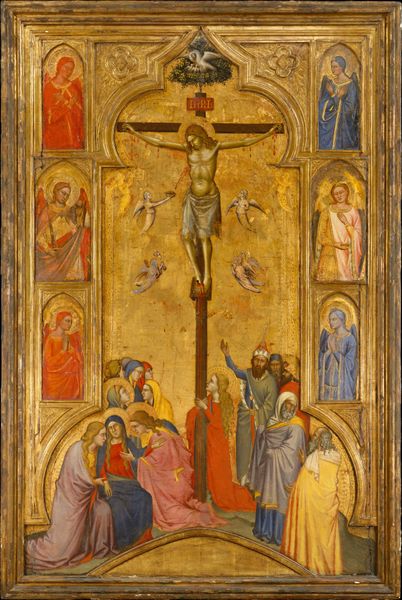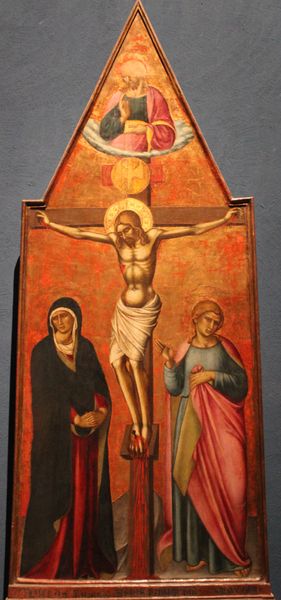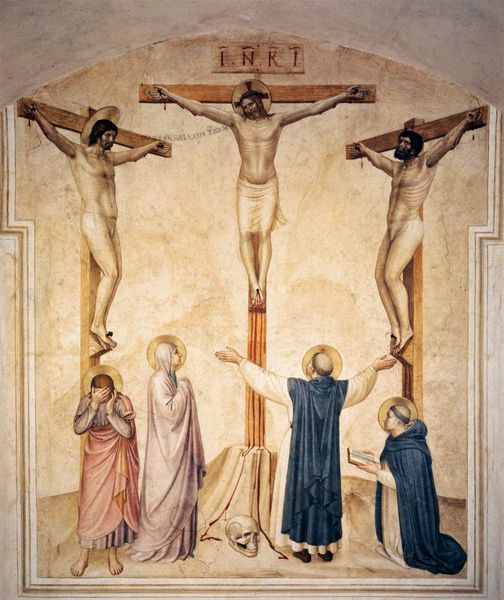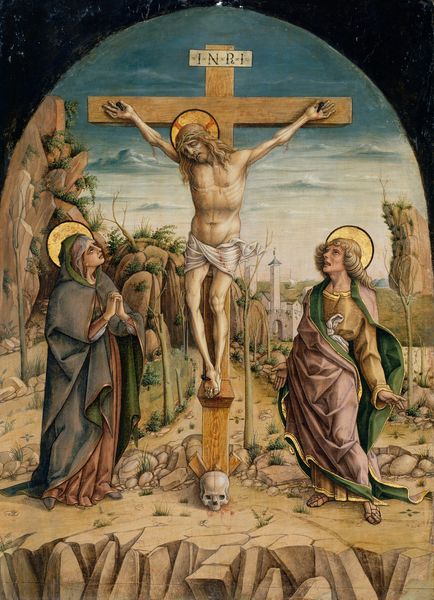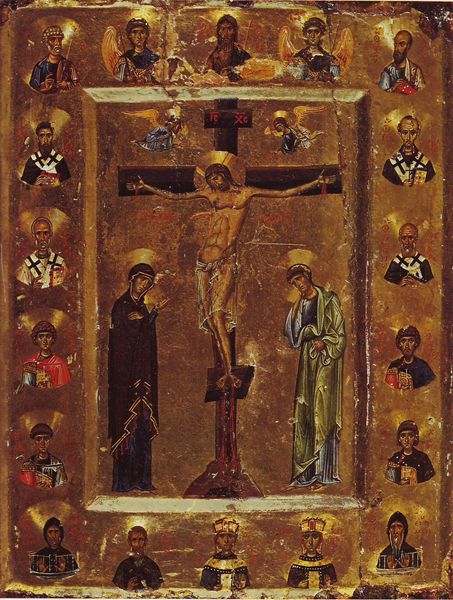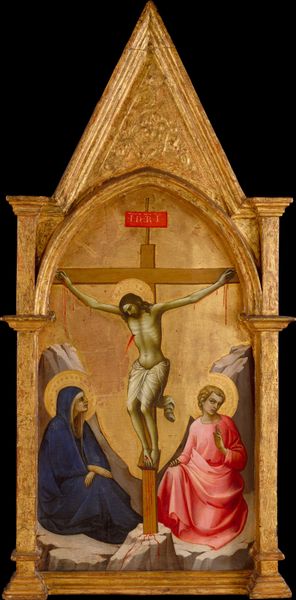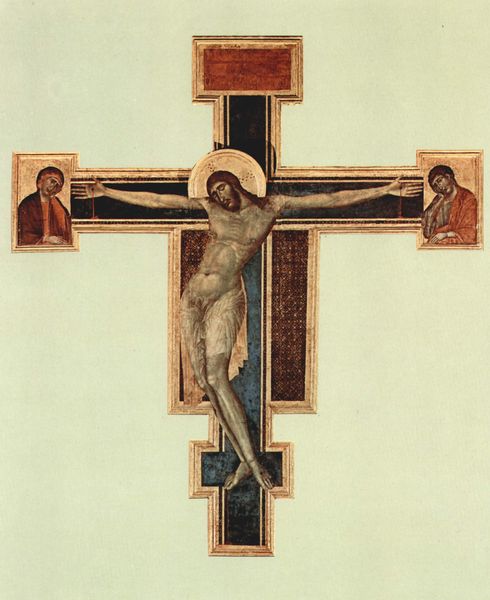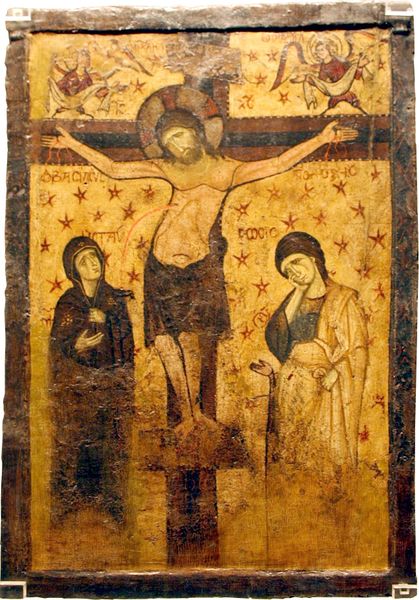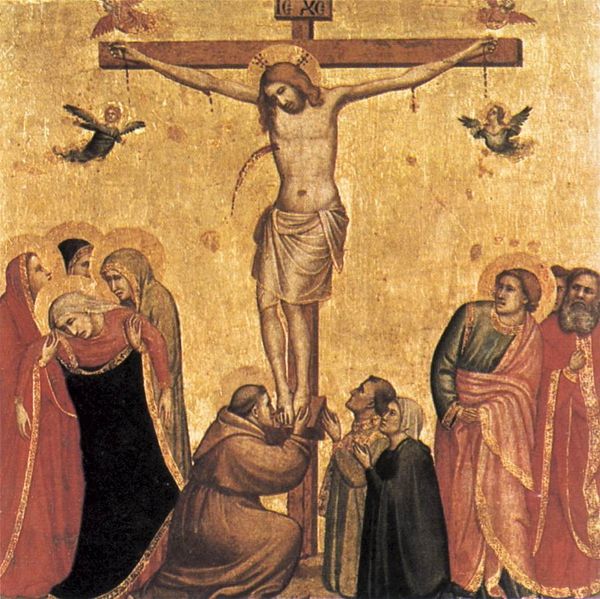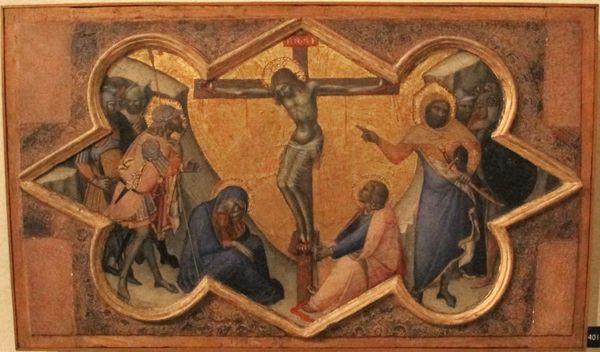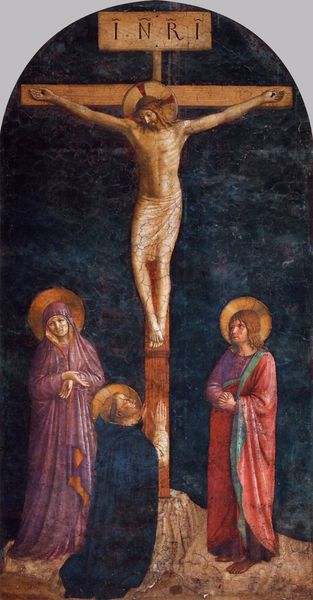
tempera, painting
#
byzantine-art
#
medieval
#
tempera
#
painting
#
figuration
#
oil painting
#
history-painting
Copyright: Orthodox Icons,Fair Use
Curator: What strikes you most immediately about this piece? Editor: The stark gold backdrop against the somber figures, certainly. There's an almost jarring contrast between the suffering depicted and the preciousness of the material itself. It feels...intentional. Curator: It is. We’re looking at "Crucifixion (back side)", a tempera on panel from around 1350. The artist, sadly unknown, created it during a time when Byzantine art emphasized spiritual depth over naturalistic representation. That gold leaf, you see, it’s not just decorative. It represents divine light. Editor: So the choice of medium, the tempera and gold leaf, it’s not merely aesthetic. The precious materials underscore the weight and value of this moment for the viewer. Who are the figures alongside Christ? Curator: The sorrowful figures are typical. To Jesus's left, Mary the Mother of God, draped in her sorrowful blue. John the Apostle, to the right, is equally anguished, heads bowed and resting in the grief that the Crucifixion carries for the faithful. Editor: It’s a common trope, but executed with such gravity here. Even though stylized, I'm struck by the emotional impact this Byzantine-style depiction holds even today. Do you see elements reflecting a contemporary political or social landscape for this work? Curator: During the 14th century, Byzantium was in decline, constantly threatened by external forces. Icons served not only as devotional objects but also as reminders of faith in the face of adversity. The enduring presence of the divine light, symbolized by the gold, offered hope during dark times. Editor: A source of resilience through imagery, a visual tether to stability through both belief and the tradition it came to embody. Even centuries later, as an artifact, the piece makes palpable that interplay between collective memory, cultural symbol, and socio-political landscape. Curator: Absolutely. By analyzing the piece through the lens of its iconography and its historical context, we can glean a fuller understanding of both its aesthetic qualities and its cultural function, all within a single piece. Editor: Indeed. From symbol to substance, there's much here that extends beyond aesthetics and informs us of the enduring human condition of finding ways to believe, to endure, and remember collectively through even our darkest chapters.
Comments
No comments
Be the first to comment and join the conversation on the ultimate creative platform.
